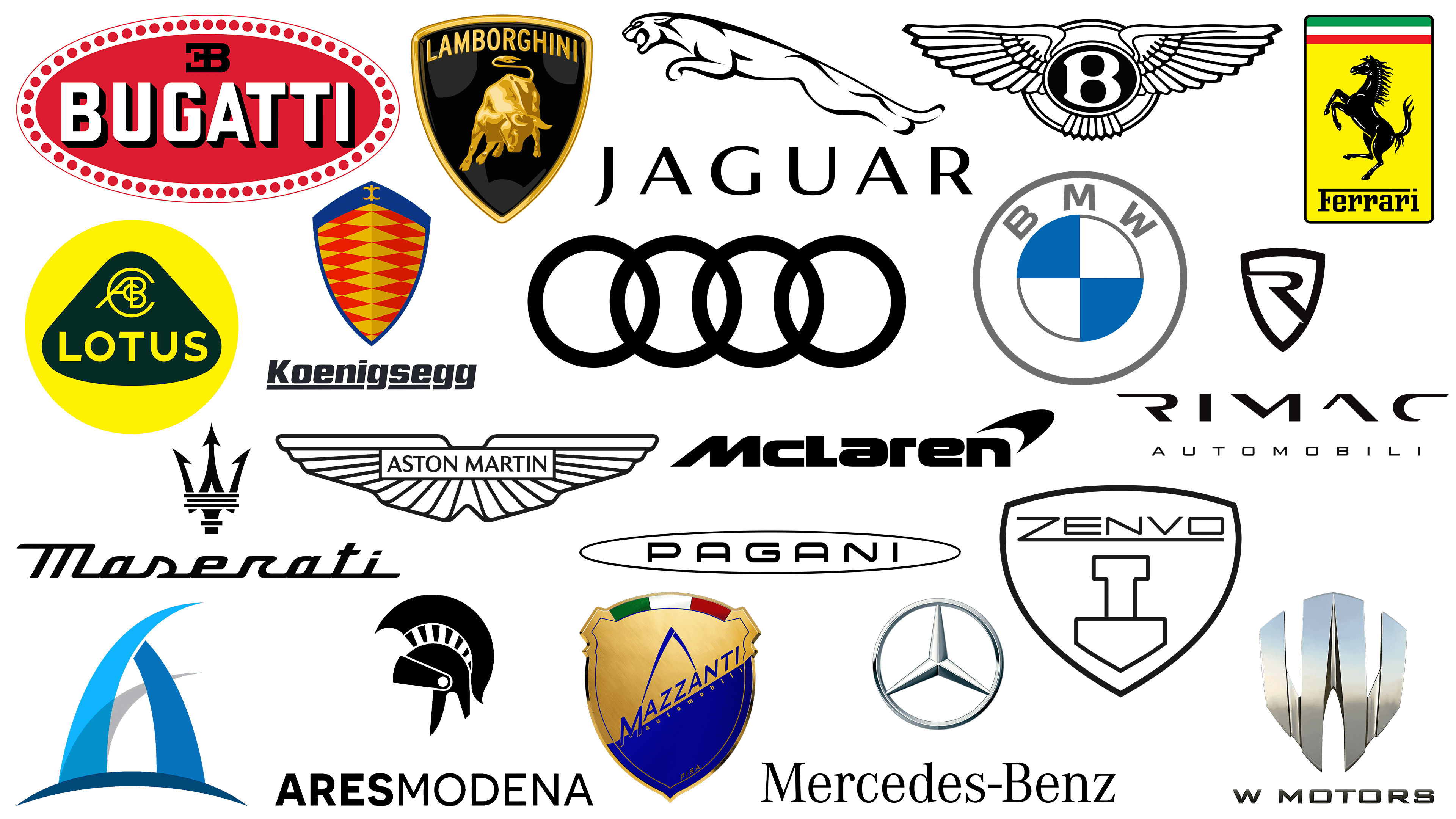The China Factor: Analyzing The Difficulties Faced By Luxury Car Brands

Table of Contents
Navigating the Regulatory Landscape in China
The regulatory environment in China presents a significant barrier to entry and sustained success for luxury car brands. Understanding and adapting to these regulations is crucial for profitability.
Import Tariffs and Taxes
High import duties significantly increase the final price of luxury vehicles, impacting affordability and competitiveness. These tariffs can add tens of thousands of dollars to the cost of a vehicle, making them less attractive to price-sensitive consumers, even in the luxury segment.
- Specific Tariff Rates: The exact rates vary depending on the vehicle's engine size, fuel type, and origin country. These rates are frequently adjusted, adding to the complexity for businesses.
- Impact on Pricing Strategy: Luxury brands must carefully balance pricing to maintain profitability while remaining competitive. This often involves absorbing some of the tariff costs to stay in the market.
- Mitigation Strategies: To mitigate the impact of high import tariffs, many luxury brands are adopting strategies like local assembly, establishing joint ventures with Chinese manufacturers, or leveraging existing distribution networks to reduce costs.
Stringent Emission Standards and Regulations
China's commitment to environmental protection is reflected in its stringent emission standards, stricter than many other markets. Meeting these standards requires significant investment in research and development.
- Impact on Vehicle Development: Luxury car brands must adapt their vehicle designs and engine technologies to comply with increasingly stringent emission regulations. This involves significant engineering and testing, leading to increased development costs.
- Cost of Compliance: Implementing technologies like advanced emission control systems and investing in electric or hybrid vehicle development add to the overall production cost.
- Electric and Hybrid Vehicle Strategies: The push for environmental sustainability presents both a challenge and an opportunity. Luxury brands must develop compelling electric and hybrid vehicle offerings to meet growing demand and comply with regulations. This requires significant investment in battery technology and charging infrastructure.
Complex Bureaucracy and Licensing
The process of obtaining the necessary permits and licenses to operate in the Chinese market is notoriously complex and time-consuming. Navigating this bureaucracy requires significant resources and expertise.
- Time and Resources: The application process can be lengthy, involving multiple agencies and extensive documentation. This requires dedicated personnel and considerable time investment.
- Potential Delays and Associated Costs: Delays in obtaining licenses can disrupt launch schedules, leading to lost revenue and market share. The associated legal and consulting fees also add to the overall cost of doing business.
Understanding the Chinese Consumer
The Chinese luxury car consumer is sophisticated, discerning, and technology-driven. Understanding their preferences is critical for success.
Brand Perception and Prestige
The Chinese luxury car market places a premium on brand prestige and image. Heritage, craftsmanship, and exclusivity are highly valued.
- Importance of Brand Heritage: Brands with a strong history and established reputation have a significant advantage in the Chinese market. This reflects a cultural appreciation for tradition and quality.
- Image Cultivation: Luxury brands invest heavily in cultivating their brand image through sophisticated marketing campaigns, exclusive events, and partnerships with high-profile individuals and organizations.
- Social Media and Influencer Marketing: Social media and influencer marketing play a significant role in shaping brand perception and driving sales. Brands must leverage these channels effectively.
Demand for Cutting-Edge Technology and Innovation
Chinese consumers are early adopters of technology, demanding advanced features and innovative design in their luxury vehicles.
- Integration of Latest Technology: Features like autonomous driving systems, advanced connectivity features, and sophisticated infotainment systems are highly valued.
- Successful Implementations: Brands that successfully integrate cutting-edge technology into their vehicles gain a competitive advantage and resonate strongly with consumers.
- Digitalization: The increasing digitalization of the automotive experience, including connected car services and over-the-air updates, is crucial to attract tech-savvy Chinese consumers.
Preference for Specific Vehicle Types and Sizes
Consumer preferences in China may differ significantly from other markets. SUVs, in particular, enjoy immense popularity.
- Popularity of SUVs: The preference for SUVs reflects a desire for space, practicality, and status. Luxury brands must offer a strong range of SUV models to compete effectively.
- Engine Size Preferences: While fuel efficiency is important, powerful engine options remain desirable in the luxury segment.
Intense Competition and Local Players
The Chinese luxury car market is fiercely competitive, with both established global brands and increasingly powerful domestic players vying for market share.
Established Domestic Brands
The rise of strong domestic brands like Geely, BYD, and NIO presents a significant competitive challenge to established global players.
- Market Share of Domestic Brands: These brands are rapidly gaining market share, particularly in the electric vehicle segment.
- Competitive Advantages: Domestic brands often offer competitive pricing and features tailored to the specific needs and preferences of the Chinese consumer.
Price Wars and Aggressive Marketing Strategies
The intense competition often leads to price wars and aggressive marketing campaigns, impacting profitability and demanding sophisticated strategies.
- Impact on Profitability: Price wars can squeeze profit margins, forcing brands to carefully manage costs and optimize their pricing strategies.
- Effective Marketing Strategies: Brands need to develop highly targeted and effective marketing campaigns to stand out in a crowded marketplace. This involves leveraging digital channels and understanding the nuances of the Chinese consumer.
Conclusion
Successfully navigating the Chinese luxury car market requires a deep understanding of the regulatory environment, consumer preferences, and competitive landscape. Luxury car brands must adapt their strategies to address the unique challenges presented by the "China Factor," including navigating complex regulations, satisfying discerning consumers, and competing with both established global and rising domestic brands. By carefully considering these factors and developing tailored approaches, luxury brands can unlock the significant potential of this lucrative market. Learn more about optimizing your strategy for Luxury Car Brands in China and achieve success in this dynamic market.

Featured Posts
-
 Bills Qb Josh Allen Focused On Football Despite Impending Wedding To Hailee Steinfeld
May 28, 2025
Bills Qb Josh Allen Focused On Football Despite Impending Wedding To Hailee Steinfeld
May 28, 2025 -
 The Last Of Us Season 2 Exploring Uncharted Territories
May 28, 2025
The Last Of Us Season 2 Exploring Uncharted Territories
May 28, 2025 -
 Projecting The 2025 Mlb Season Ranking Starting Left Fielders
May 28, 2025
Projecting The 2025 Mlb Season Ranking Starting Left Fielders
May 28, 2025 -
 Nadals Emotional Roland Garros Farewell Sabalenkas Triumphant Win
May 28, 2025
Nadals Emotional Roland Garros Farewell Sabalenkas Triumphant Win
May 28, 2025 -
 Rebecca Blacks Bold Shotgun Wedding Inspired Look At The Amas
May 28, 2025
Rebecca Blacks Bold Shotgun Wedding Inspired Look At The Amas
May 28, 2025
Latest Posts
-
 Onderzoek Schietincident Venlo Met Pasen Nieuwe Aanhouding
May 29, 2025
Onderzoek Schietincident Venlo Met Pasen Nieuwe Aanhouding
May 29, 2025 -
 New A24 Horror Movie Directors Confirm Link To 92 Million Hit
May 29, 2025
New A24 Horror Movie Directors Confirm Link To 92 Million Hit
May 29, 2025 -
 A24 Horror Film Hints At Connection To Studios Past Success
May 29, 2025
A24 Horror Film Hints At Connection To Studios Past Success
May 29, 2025 -
 A24s New Horror Movie Connections To The Studios 92 M Hit Revealed
May 29, 2025
A24s New Horror Movie Connections To The Studios 92 M Hit Revealed
May 29, 2025 -
 Venlo Paasschietincident Laatste Updates Over De Aanhouding
May 29, 2025
Venlo Paasschietincident Laatste Updates Over De Aanhouding
May 29, 2025
